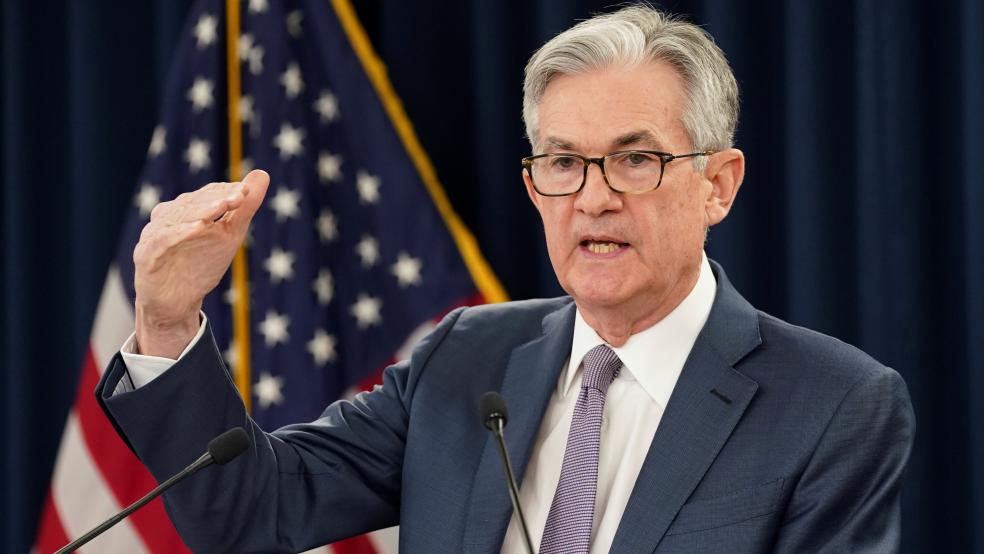The Federal Reserve on Wednesday raised its benchmark short-term interest rate for the first time since 2018, lifting its target for the federal funds rate by 25 basis points to 0.25% to 0.5%.
The central bank’s rate-setting committee also indicated that it expects to raise rates six more times this year, bringing the benchmark rate to just below 2%, as officials look to fight inflation that has reached a four-decade high.
“The economy is very strong and against the backdrop of an extremely tight labor market and high inflation, the committee anticipates that ongoing increases in the target range for the federal funds rate will be appropriate,” Fed Chair Jerome Powell said.
The bank will also start reducing its balance sheet, further reducing monetary support for the economy, Powell said.
The moves are part of an effort to cool an economy struck by an inflationary trend that has been more severe and persistent than policymakers predicted. Interest rates have been near zero since the Covid-19 pandemic took hold in March 2020.
Expecting more inflation, less growth: The Federal Open Market Committee said in a statement that inflation is expected to persist in the short run while fading in the second half of the year. “The invasion of Ukraine by Russia is causing tremendous human and economic hardship. The implications for the U.S. economy are highly uncertain, but in the near term the invasion and related events are likely to create additional upward pressure on inflation and weigh on economic activity,” the FOMC said.
In a new set of projections, the Fed’s median estimates for year-end consumer inflation rose from 2.6% to 4.3%, while its projections for economic growth fell from 4% to 2.8%. But the long-term target for inflation is still in sight, the bank said. “With appropriate firming in the stance of monetary policy, the committee expects inflation to return to its 2 percent objective and the labor market to remain strong.”
At the same time, Powell indicated that he’s not particularly worried about a recession, despite the tightening conditions. “In my view the probability of a recession within the next year is not particularly elevated,” he said. “All signs are that this is a strong economy, indeed, one that will be able to flourish — not to say withstand, but certainly flourish, as well — in the face of less accommodative monetary policy.”
Ignoring the hawks? The Fed’s decision to raise rates by a quarter of a point was widely expected, though there were inflation hawks calling for larger increases, now and throughout the year. The vote on the rate hike was 8-1 in favor, with noted inflation hawk James Bullard, chair of the St. Louis Fed, voting no as he pressed for a larger increase.
Former Treasury Secretary Larry Summers has also called for a more aggressive response to inflation, and in an op-ed piece at The Washington Post urged the Fed to take more dramatic steps. “I believe the Fed has not internalized the magnitude of its errors over the past year, is operating with an inappropriate and dangerous framework, and needs to take far stronger action to support price stability than appears likely,” Summers wrote. “The Fed’s current policy trajectory is likely to lead to stagflation, with average unemployment and inflation both averaging over 5 percent over the next few years — and ultimately to a major recession.”
Powell ignored those calls, however, to the relief of some more dovish analysts. “The flaw in Summers’s analysis is that the current inflation is not the result of ordinary demand overheating, much less wage pressures. We have had a series of supply shocks, compounded by a war,” wrote Robert Kuttner of The American Prospect. “Artificially engineering a recession will not cure these extraneous factors.”
The bottom line: The Fed signaled Wednesday that fighting inflation — gradually — is now its main focus, and it will do what it takes to prevent price increases from persisting over the long term. At the same time, the leader of the central bank expressed confidence that inflation can be brought under control without bringing economic growth to a halt, achieving a “soft landing” in what has proved to be an unexpectedly difficult environment.




